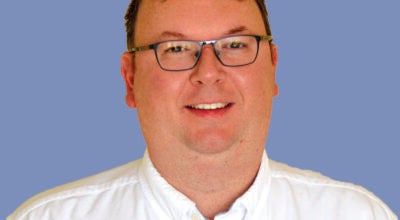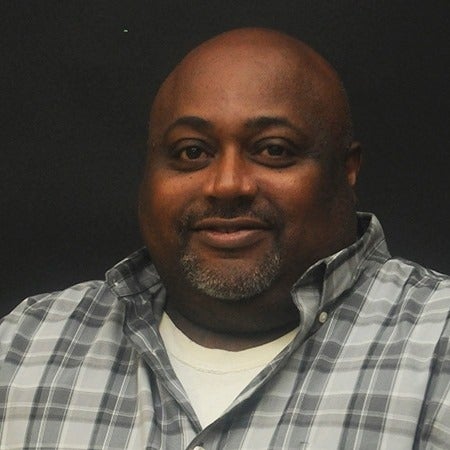Bonner’s role forgotten in voting rights history
Published 9:06 pm Saturday, August 6, 2016
By Jim Stallings
Special to the Times-Journal
Lying here in bed at 3:35 a.m. seemingly not able to go to sleep, my mind started to reflect on things in the past. The annual crossing of the Edmund Bridge “Bloody Sunday” came to mind. “Wow” I said out loud, this will be the 51st. I then thought, here we go again; Dignitaries, luminaries, and people from everywhere will once again be in our beloved city of Selma. Everyone will be trying to find the best spot/area to be seen on camera/TV. They will be giving interviews and statements about what they did and the part they played during those sad, tumultuous time of injustice. Then I thought, what would have happened had one man, whose name has never been whispered, mentioned, or associated with, or played a part in the movement; would the movement have taken place or happened the way that it did? Would Brown Chapel be called “historic?” Let me tell you something about this man I am writing about. He was a native Alabamian born in Wilcox County, just over the Dallas County line, about 25 miles from Selma. He grew up in very, very meager surrounding; worked his way through Knoxville College in Knoxville, Tennessee, by keeping the boilers fired, sleeping on a cot sometimes in the boiler room. He used to tell us, my wife, son, and me of having only two pair of pants and four shirts. He would wash the one he had worn, drying them by the boiler, and putting them between the mattresses to get a crease. After, washing and drying the shirt, ironing the collar in front on a light bulb hanging down on a cord from the ceiling.
He was called to the ministry and became a dynamic preacher in the African Methodist Episcopal Church. Along his journey, he taught school and was named principal at Miller’s Ferry High in Wilcox County. He pastored at the most prestigious churches at the time such as: Cherry St. AME (Dothan), Brown Chapel AME (Selma), St. John AME (Montgomery), and Bethel AME (Mobile). He was elected and consecrated a bishop while pastoring at Bethel. He moved back to Selma.
His first assignment as bishop was in South Africa from 1948-1952. Upon returning to the U.S., was assigned to the Ninth Episcopal District of Alabama, serving from 1952-1956 … assigned to the Seventh District of South Carolina serving from 1966-1968. Along the way, he became President of the Bishop’s Council. His last assignment was over the eight districts, which was Louisiana/Mississippi 1968-1976. He died in 1969.
This man that I am writing about is Bishop Isiah Hamilton Bonner — my father-in-law. Why am I writing this? 1. I want the truth about who really gave the order to open up the doors to Brown Chapel to be used in 1965. It has never been told. 2. I want the man who did give the permission known, so he can have his proper place in the history of the Civil Voting Rights (Brown Chapel) Movement. 3. I want our children, grandchildren, great grandchildren, and any other relatives to know. 4. Not the untruth told in a book written by someone who did not tell it. 5. And the people.
What I write is the absolute truth, as I witnessed the following exchange conversation. Actual exchange: In 1965, the Rev. P.H. Lewis, Pastor of Brown Chapel AME Church, came to Bishop Bonner’s (Pa Pa’s) resident and told him that the movement wanted permission to use Brown Chapel as its mass meeting place and headquarters. He said that other churches, Clinton Chapel AME, Tabernacle Baptist, and First Baptist, had held some meetings but that their safety concerns with Tab and First Baptist being located on open streets like Broad St. and Jeff Davis Ave. He also stated that a Federal Judge had issued an order, which said, “Any church used for that purpose would “lose its nonprofit status” At that, Bishop Bonner said, “What? Lewis, “ain’t no white man is going to tell me who to let use that church, that church was built by black folk, for black folk.” I am paid by the African Methodist Church, not the federal government. Lewis, “You open up those doors.”
The conversation moved to the outside. The Rev. Lewis was then standing on the ground, the bishop on the porch reiterating to Lewis to open up those doors. The Rev. Lewis drove up to Second Ave., turning right, over to St. Phillips St.
After Bishop (Pa Pa) died in 1979, P.H. wrote a book saying that Bishop Bonner was scared, indecisive, so he made the decision to let Brown Chapel be used… This is a lie that’s been going on for 51 years. I was there. I was/am totally surprised, angry, vexed and down-right angry.
Bishop Bonner was a mentor to Lewis, guiding him along the way, assigning him to those churches toward the Bishopric. He blew it.
In the book, he said his reason for writing it was to let my wife, Betty E. Bonner Stalling, know the truth. We lived with Bishop Bonner. My wife handled if not all, most of his business here in Selma and heard things that he did not. Plus, I drove him to visit the churches in the Ninth Episcopal District. We knew it then and still know the truth.
We have sat and ate at the dinner tables with the likes of most of the bishops and hierarchy of the connection such as, Bishops: D. Ward Nichols, Sherman Greene, Frank Madison Reid, George Baber, and others like the treasurer of the AME Connection, Dr. A.G. Gaston, millionaire business owner- banks, motels, insurance companies and funeral homes of Birmingham.
Lewis stated in the book, he told Bishop Bonner if he did not agree to the usage of Brown Chapel, he would let people know that bishop was not a registered voter and lived on a unpaved dirt street, etc. Well, when I came to Selma, June 4, 1960, all black folk lived on dirt streets and many were not registered voters. That’s what the movement was all about. Lewis was reared in Wilcox, AL and all streets were dirt is what P.H. Lewis did not know.
When the first freedom/civil right workers came to Selma, they were arrested and put in jail. The Rev. Claude (C.C.) Brown called Bishop Bonner and told him about it. The Rev Brown said people were afraid to post bond. The bishop said, “I’ll be right there, C.C.” He turned to me and said, “6’2, take me to the City Hall” but the Rev. C.C. Brown picked him up instead and to the jail they went.
Some years later, he received a call telling him to come get his money. He then said, “Let it stay. I know where it is. I’ll come to get it when I want it.” Bishop Bonner let the Rev. Lewis use his automobile to take people (luminaries) to and from the airport in Montgomery, letting them use his “Gulf” gas card, paying for it himself. I washed and cleaned the car to drive him to visit his churches on Sundays. Does this sound like the person the Rev. P.H. Lewis portrays in his book? I know not. Shame, shame, shame P.H. This man did not march or demonstrate, he was too old, but he did his part and what he could to show his support.
There was nothing in Brown Chapel about Bishop Bonner until the Alpha Phi fraternity held a banquet at Wallace Community College honoring P.H. Lewis and presented his picture to be displayed in Brown Chapel. I voiced my displeasure, told them why and stopped attending for a while. The church found a 8 x 10 of the bishop, placed it in the vestibule alongside of P.H. Lewis, raising his status to that of a bishop and the authority of the bishop.
May I ask this question? Would a picture of a cardinal or priest be placed beside the pope? Would the government place the picture beside the president? Of course not. So why would a preacher’s picture be placed beside a bishop, the head of order? Shame, shame, shame.
In 2005, Mrs. Evelyn Lowery, president of the Women’s Southern Christian Leadership organization, had a black marble monument made and erected in from of Brown Chapel Church on the church property. Bishop I.H. Bonner’s name is listed fourteenth in the first line at the bottom along with students, marchers, and other demonstrators. Is this right? The leader of the Ninth Episcopal District of the whole state of Alabama; who could have said, “No, you can’t use Brown Chapel.” Well, Bishop (Pa Pa), I know you would have said, “Leave it alone, 6’2” but I had to tell the story. I had to tell the truth as I witnessed it. Anthony, my son, tell your children (our grandchildren), your grandchildren about Bishop Isiah Hamilton Bonner (Pa Pa). I have written it. It is well with my soul. Selah, Selah.



